Medical expert of the article
New publications
Preparations
Ointments for diaper rash
Last reviewed: 03.07.2025

All iLive content is medically reviewed or fact checked to ensure as much factual accuracy as possible.
We have strict sourcing guidelines and only link to reputable media sites, academic research institutions and, whenever possible, medically peer reviewed studies. Note that the numbers in parentheses ([1], [2], etc.) are clickable links to these studies.
If you feel that any of our content is inaccurate, out-of-date, or otherwise questionable, please select it and press Ctrl + Enter.
Diaper rash is an inflammation of the skin that occurs with prolonged friction or over-moistening with sweat or sebum. Diaper rash occurs with intense sweating or sebum secretion, urinary incontinence, hemorrhoids, and allergies to cosmetics or food products. Diaper rash can also be caused by: insufficient drying of the skin after bathing or friction of the skin against clothing (especially synthetic materials), or diapers.
Symptoms of diaper rash are: reddening of the skin, itching, irritation. If you do not start treatment in time, then in the future small cracks will appear on the skin, which will soon begin to bleed. Bleeding cracks without proper care are covered with a grayish coating, which has an unpleasant odor. In such cases, an infection can join the diaper rash, and then the disease will proceed chronically, sometimes patients cannot be cured for many years. Diaper rash with an associated infection is called infectious diaper rash, which is characterized not only by redness and itching in the affected areas of the skin, but also by pain and burning.
Therefore, you can't ignore diaper rash. You need to start treating it as soon as it appears. To eliminate this unpleasant disease, diaper rash ointments are often used.
 [ 1 ]
[ 1 ]
Indications diaper rash ointment
Intertrigo most often appears in the folds between the fingers and toes, in the inguinal-femoral and intergluteal areas, in the folds of the neck and abdomen (in overweight people), in the armpit area. Women may develop intertrigo under the mammary glands, and small children may develop it due to insufficient care and various dermatological diseases.
Indications for the use of ointments for diaper rash
- diaper rash (common, infectious) and its prevention;
- purulent skin lesion;
- eczema;
- necrosis of the skin under constant pressure (bedsores);
- healing of burns, cuts, abrasions, wounds, cracks;
- diaper dermatitis;
- damage to the skin and mucous membranes by yeast fungus (candidiasis);
- psoriasis;
- dermatitis.
 [ 2 ]
[ 2 ]
Release form
Zinc ointment
The main active ingredient of zinc ointment is zinc oxide, which has astringent and antiseptic properties, dries and softens the skin. It reduces the process of exudation (fluid release from small wounds on the skin).
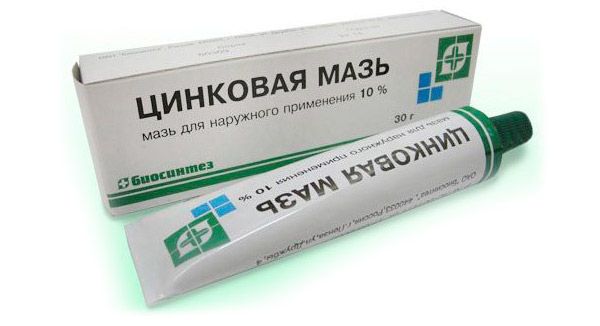
Zinc ointment is applied externally and has an affordable price. It is easy to use, harmless, and can be used by both adults and the elderly (including those suffering from kidney and liver failure), as well as small children. When using it, it is worth considering that the ointment is contraindicated for purulent wounds on the skin.
Bepanten
Available in cream and ointment form. Bepanten's analogue is D-panthenol. The active ingredient in Bepanten is dexpanthenol. The skin quickly absorbs dexpanthenol, which is transformed into pantothenic acid. This acid has a positive effect on the skin, accelerates wound healing processes. The acid enters the blood in small quantities, binds to plasma proteins and is excreted unchanged.
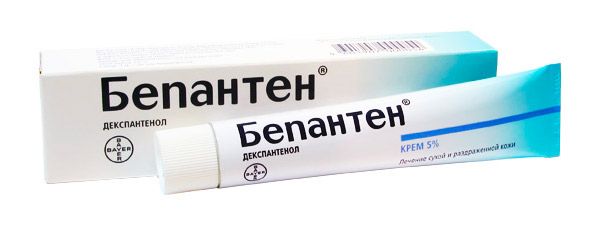
The cream can be used at every diaper change for children. It is approved for use by pregnant and nursing mothers. It is non-toxic. It does not interact with other medications, but it is not recommended to use it together with other anti-diaper rash medications.
There are no contraindications to this cream, except for hypersensitivity to dexpanthenol.
Nystatin ointment
The ointment for diaper rash "Nystatin" contains the antifungal antibiotic nystatin, the mechanism of action of which is to delay the growth and development of pathogenic fungi. Accordingly, it is prescribed only for infectious diaper rash. When used locally, the antibiotic is absorbed into the blood in small quantities and excreted with feces. The antibiotic does not accumulate in the body, which is a positive feature of this ointment.
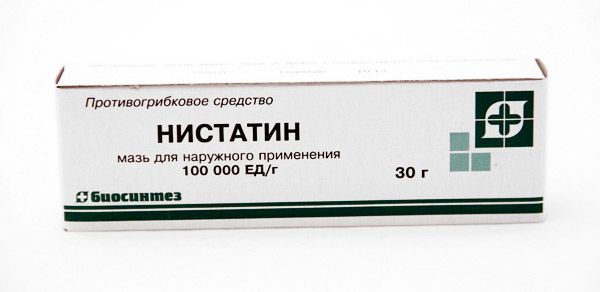
The drug is easy to use, applied to the infected areas of the body a couple of times a day. Nystatin should not be used during pregnancy. Nystatin and clotrimazole should not be used together, since the latter is also an antifungal antibiotic and nystatin can significantly reduce its effect. The ointment is contraindicated in liver disorders. The drug should be stored in a cool place with an air temperature of no higher than 5 ° C.
Clotrimazole ointment
The active ingredient of this diaper rash ointment, like nystatin, is an antifungal agent. The difference between nystatin and clotrimazole is that the latter has a broader spectrum of action.
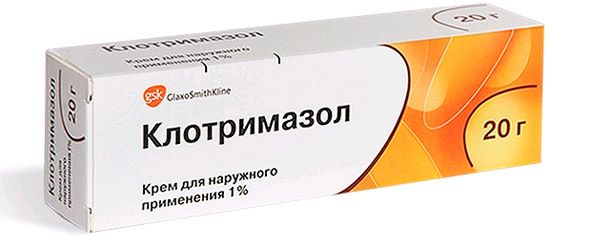
The drug slows down the growth and development of pathogenic bacteria (staphylococci, streptococci, bacteroids, gardnerella, trichomonads) and fungi (trichophytons, epidermophytons, Candida fungi), causing their death, it has an antiseptic, antibacterial and trichomonacidal effect, disinfects the skin surface. When applied locally, it acts only in the upper layers of the skin, is not absorbed into the blood (in this regard, an overdose when taking this drug is almost impossible).
This ointment, like the previous one, is contraindicated for pregnant women. It is not recommended to use it simultaneously with dexamethasone (hormone).
Salicylic ointment
The main active ingredient of salicylic ointment is salicylic acid. It has a wide range of applications, relieves inflammation and redness. Salicylic acid prevents the proliferation of pathogenic microorganisms on the skin surface, actively softens and removes dead skin cells (which accelerates skin regeneration).
Directions for use: Apply the ointment to the damaged skin, then apply a clean, dry bandage on top. But remember that the bandage should be changed every day.
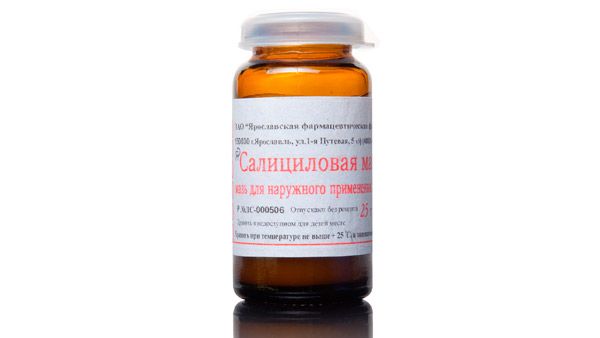
Contraindications: Do not apply the ointment to birthmarks or warts under any circumstances.
Before using this drug during pregnancy, you must consult a doctor. Salicylic ointment should not be used simultaneously with zinc ointment.
Liniment "Sintomycin"
The liniment contains two main components: syntomycin (chloramphenicol) and castor oil.
The first ingredient is an antibiotic. It is good because bacteria develop resistance to it relatively slowly. It is active against microorganisms that are resistant to sulfonamides and penicillin. Pharmacodynamics: completely destroys pathogenic flora on the skin, delays further reproduction of bacteria.
The second component is castor oil, or castor oil. It has an anti-inflammatory effect, relieves itching and pain, and softens the skin.
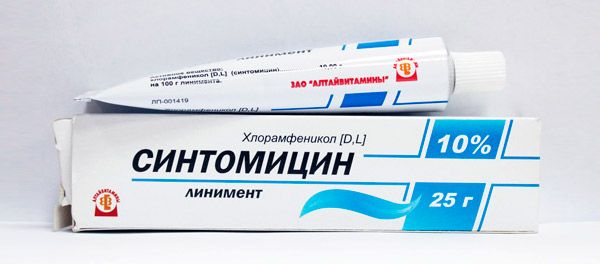
Features of using the liniment: it should be applied only to infected areas of the skin, it is unacceptable to combine syntomycin with other drugs for external use. Do not use the liniment for a long time, it is better to alternate it with other drugs of similar action. Syntomycin is contraindicated for people who have malignant or benign skin lesions, as well as pregnant women.
Directions for use: squeeze a sufficient amount of liniment onto a clean cotton pad, apply the preparation to the skin, and apply a sterile dry bandage (parchment paper is fine) on top. Bandages should be changed every 48-72 hours.
Calendula ointment
This ointment for diaper rash contains calendula tincture. Calendula is very useful, it exhibits antiseptic and reparative properties. These properties are due to the presence of a huge number of useful substances (saponins, flavonoids, carotenoids, organic acids, tannins, etc.), which enhance the processes of wound epithelialization.
Contraindications: children under five years of age, individual intolerance to calendula.
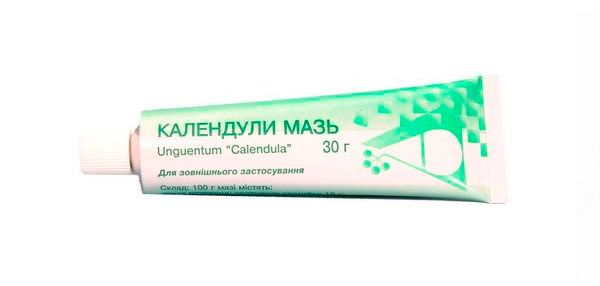
Use during pregnancy: determined by the attending physician.
Be extremely careful with the ointment, do not allow it to get into your eyes.
Ointment "Streptocide"
Streptocide is a representative of sulfanilamide drugs - these are broad-spectrum antibacterial agents. The action of streptocide is to inhibit the growth of pathogenic bacteria.
The preparation is applied externally by applying (with dry and clean hands or a cotton pad) a sufficient amount of ointment to previously washed and clean skin. After application, hands must be washed thoroughly to prevent the ointment from getting into the eyes or on the mucous membranes.
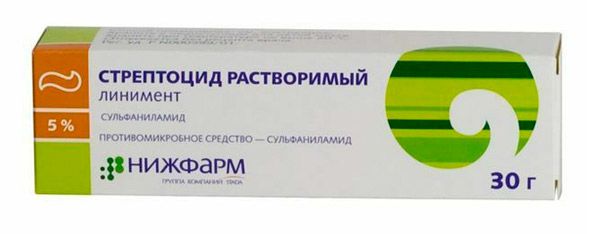
This ointment for diaper rash is contraindicated for children, in case of renal failure, during pregnancy and breastfeeding, and in case of various diseases of the circulatory system.
Cream "Advantan"
The main active ingredient of the cream "Andvantan" is methylprednisolone. Methylprednisolone is a synthetic glucocorticoid drug. Glucocorticoids are hormones of the adrenal cortex, which have an anti-allergic effect, eliminate inflammation and redness. In addition, when applied externally, the cream has an anti-exudative effect (that is, it slows down the release of fluid from various wounds during inflammation).
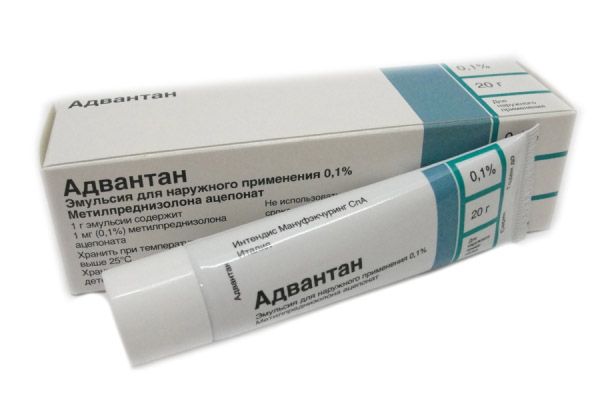
Pharmacokinetics: methylprednisolone acts in the upper layers of the skin. After, it is absorbed into the blood, broken down in the liver and excreted in the urine. Methylprednisolone does not accumulate in the body, which prevents poisoning and other toxic reactions.
The advantage of the cream is that it can be used in pediatric practice, but only from 4 months and under strict supervision of the attending physician. As for pregnant and lactating women, the question of using Advantan is decided by the doctor. Self-medication is prohibited, because it can be dangerous for the health of the mother and her future child.
Usage: the cream is applied to the skin surface in a thin layer only once a day. Long-term use of Advantan is unacceptable, because as a result, skin atrophy may develop as a side effect.
"Advantan" is also available in the form of an ointment and emulsion.
 [ 6 ]
[ 6 ]
Salicylic-zinc paste
Salicylic-zinc paste contains two main components: salicylic acid and zinc oxide. It can be purchased at a pharmacy at an affordable price. It is available only in paste form.
Salicylic acid is very useful for all kinds of skin diseases (acne, dermatitis, eczema, diaper rash, psoriasis, etc.). Its principle of action is to exfoliate dead skin areas and eliminate pathogens. In addition, the acid normalizes the processes of sebum secretion, which means the skin becomes clean, light and elastic.

Zinc oxide dries the skin, removes redness and makes it soft. It also has a whitening property. Thus, it returns the skin to its normal color.
Features of use:
- Use during pregnancy: determined by the attending physician. It is strongly recommended not to use the paste on the mammary glands during lactation (breastfeeding).
- The paste is contraindicated for children under 12 years of age.
- The ointment will help some people, but it can cause a severe allergic reaction in others. Therefore, it is not worth taking risks. There is one way to check your body's reaction to the drug: apply a small amount of the paste to your wrist and wait a couple of hours. If no changes occur on the skin, then you can use the drug on larger areas of skin.
- Interaction with other drugs: do not use salicylic-zinc paste simultaneously with products of similar composition.
- Use the product wisely. Do not apply a large amount of paste to the skin at once, so as not to cause an overdose.
Ointment "Methyluracil"
The main active ingredient of this ointment for diaper rash is methyluracil. It is an immunostimulant, has a positive effect on cell metabolism, improving tissue regeneration processes. Methyluracil accelerates tissue growth, stimulates epithelialization.
Directions for use: Apply a sufficient amount of ointment to the skin with a clean, dry cotton swab, and apply a sterile bandage on top. The frequency of applying the ointment and changing the bandages is determined individually and depends on the degree of tissue damage.
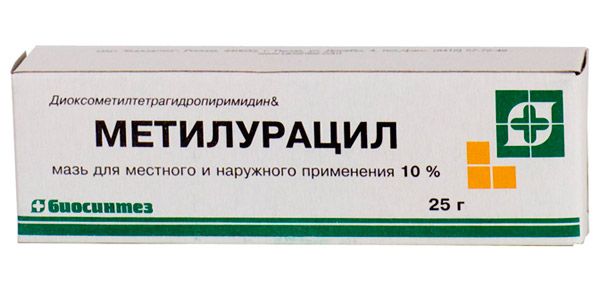
Interaction with other drugs: Methyluracil ointment can be combined with topical agents that contain antibiotics or sulfonamides.
The ointment is contraindicated in case of excessive granulation in the wound.
Pharmacodynamics
Ointments for diaper rash in the groin
Very often this diagnosis is given to small children. Adults consider diaper rash a delicate problem and quite rarely seek medical help. This tactic is wrong. It is necessary to detect diaper rash in time and begin its treatment.
Diaper rash correction plan. To eliminate the unpleasant symptoms of this disease, it is necessary first of all to observe the rules of personal hygiene. Wear clean clothes made of natural fabrics so that the skin can breathe, take a shower or bath regularly, and dry the groin folds thoroughly. Neutral detergents that do not cause irritation or allergic reactions are recommended for personal hygiene. In addition to all of the above, drug treatment is necessary:
- Disinfectants: calendula tincture, salicylic acid, boric acid solution, etc. You can also use ointments with antibiotics or sulfonamides, which have good antibacterial activity (for example, synthomycin, clotrimazole, nystatin, streptocide, methyluracil, etc.).
- Drying preparations. Of the above-described ointments, creams and pastes, the following ointments are suitable here: salicylic and zinc, salicylic-zinc paste and others.
- Healing agents: Bepanthen, dexpanthenol, calendula ointment.
 [ 7 ]
[ 7 ]
Ointments for diaper rash of the feet
In this case, diaper rash mostly appears between the toes. The causes may be: frequent and strong friction, foot fungus infection, heavy weight and excessive sweating.
Diaper rash correction plan. As mentioned above, it is necessary to follow the rules of personal hygiene: promptly clean your feet from dirt, carefully dry your feet (especially between the toes). As for shoes and socks, they should be made of natural leather and fabrics, respectively, so that the feet can "breathe". To eliminate unpleasant odor, you can use talc or other indifferent foot powders. Of the medications, ointments are used: streptocide, syntomycin, "Clotrimazole" and other ointments for diaper rash with antibiotics to eliminate fungal infections. Salicylic ointment is used to exfoliate rough skin on the heels.
Ointments for diaper rash in newborns and children
Causes of diaper rash in babies can be clothing made of synthetic materials, wearing low-quality diapers, overheating, frequent friction, fungal infection, etc.
Diaper rash correction plan. The child should wear breathable clothing and quality diapers. The maximum time to wear one diaper is three hours. After each diaper change, the baby should be bathed, thoroughly wiped with a soft towel and lubricated with baby cream or indifferent powder.
Medicines that can be used:
- Treatment of diaper rash in newborns should be carried out under the supervision of a doctor. He may prescribe bathing in herbal baths, the use of various creams (baby), powders or ointments (herbal).
- To treat diaper rash in older children, you can use zinc ointment, creams (for children), herbal ointments (calendula, chamomile, succession and eucalyptus, sea buckthorn, etc.).
The best ointment for diaper rash
Mothers of small children recommend buying zinc ointment, pantestin, bepanten, dexpanthenol. These ointments for diaper rash are affordable, practically harmless and help to cope with diaper rash in both newborns and older children.
Adults recommend using salicylic-zinc paste for mild forms of diaper rash, and for severe forms - Advantan cream, ointments: streptocide, syntomycin, nystatin and others. Methyluracil ointment is very popular, most people speak well of it.
Side effects diaper rash ointment
Side effects are mainly manifested in the form of allergic reactions. In some cases, skin atrophy is possible (with prolonged use of drugs with glucocorticoids).
 [ 8 ]
[ 8 ]
Shelf life
Shelf life for diaper rash ointments varies from 1 to 5 years.
Attention!
To simplify the perception of information, this instruction for use of the drug "Ointments for diaper rash" translated and presented in a special form on the basis of the official instructions for medical use of the drug. Before use read the annotation that came directly to medicines.
Description provided for informational purposes and is not a guide to self-healing. The need for this drug, the purpose of the treatment regimen, methods and dose of the drug is determined solely by the attending physician. Self-medication is dangerous for your health.

